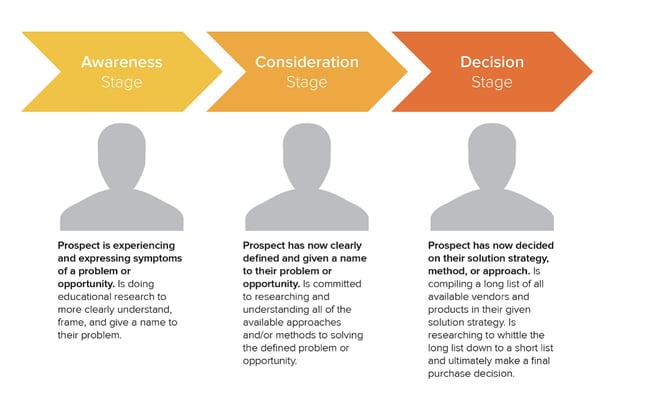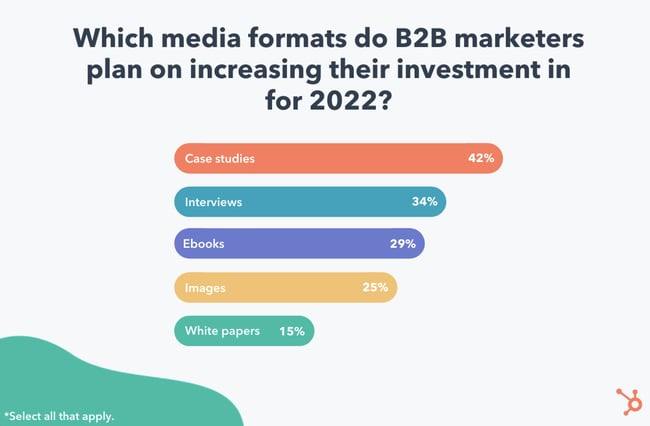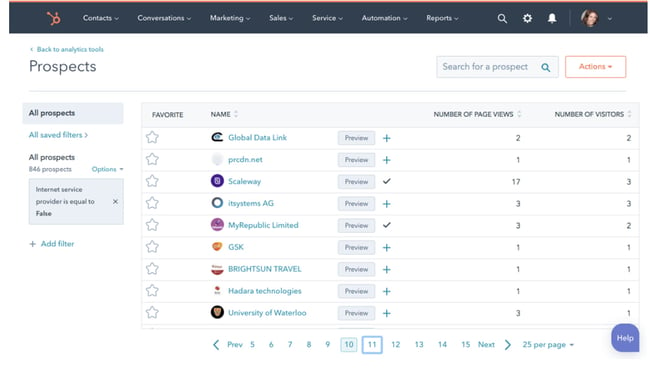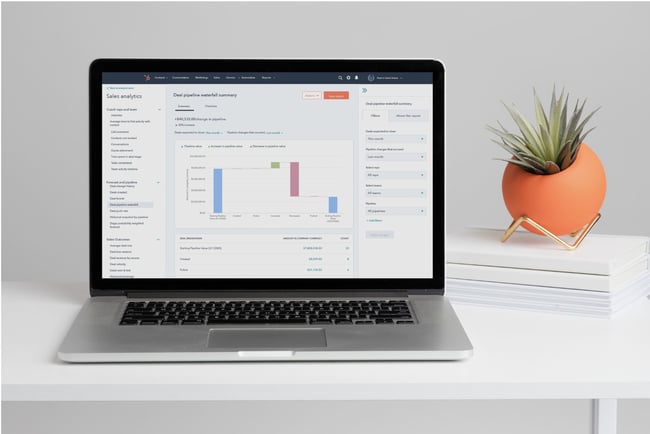It’s never been more difficult to be a B2B sales rep. You have to manage heightened expectations, battle against a multitude of competitors, and make sure you have time to meet the needs of everyone in your pipeline.
Regardless if you are a grizzled sales veteran with decades of experience or brand new to the profession, here are some simple steps to delight your prospects.
As a sales representative, you know that the relationship between you and your customers begins earlier than the acquisition stage. Positive brand experiences need to be created pre-purchase, just as much as they need to be created post-purchase.
But before you begin crafting the customer experience for your prospects, you must understand what business-to-business sales mean for you and your potential customers.

What makes a good B2B sales experience is making it easy for a business to work with you. “The positive experiences you create for your customers add to the longevity and success of every business,” says CEO and Founder of Mind and Metrics, Lica Wouters.
In fact, the happier [they] are, the more likely your customers will stay and refer a friend. “80% of future profits will come from 20% of existing customers, so it makes sense to focus on a customer’s happiness even before they become a customer.,”
But keeping customers happy enough to purchase only accounts for part of the customer’s lifetime cycle — how do you create a positive experience for your prospect during the pre-purchase phase?
Here are three common challenges B2B sales — as opposed to B2C sales — reps need to overcome to keep brand experiences delightful for the prospect, plus some tips on how to overcome them.
Challenge 1: Not Being Pushy
Everyone needs to hit their sales quotas at the end of the month, but there is a fine line between pushiness and persistence.
According to HubSpot research, for consumers, the word most commonly associated with salespeople is “pushy.” It’s a frequent problem and happens when we stop listening to our prospects and instead start listening to our own internal dialogue.
For example, asking for a demo before the prospect is ready — the prospect may entertain the demo but will have their defenses up, making the next steps uncomfortable.
So avoid pushing a prospect further down the buyer’s funnel before they are ready. This results in a sale where the client doesn’t feel like they are in control of their brand goals.
How To Fix: Let the prospect make the next move.
Whenever someone is looking to make a purchase, let the prospect think about it and do their due diligence.
So put away the timetable and stop focusing solely on hitting monthly sales quotas; instead, focus on meaningful engagements. Your top priority is being there for the buyer at the right time, with the right information, advising the sale, and looking at the pipeline in its entirety.
This also means that sales managers need to shift their KPIs and start looking at metrics normally reserved for customer success teams, like churn rates and net promoter score (NPS). Both of these metrics originate and have roots in the sales process.
Challenge 2: Creating a Personal Experience At Scale
Relationships are everything in B2B sales. Whether you are walking a tradeshow floor or engaging with someone online, getting prospects to “like you” is the best way to create a positive sales experience.
Being likable doesn’t mean constantly telling jokes or showering the prospect with false compliments. Likability is a hard thing to quantify, but if you look at behavioral research, certain commonalities appear again and again. Some common traits of likable people include:
- They remember names and details.
- They ask insightful questions and actively listen.
- They smile and maintain open, positive body language.
- They don’t pretend to know better and aren’t afraid to admit if they don’t know something.
So keep these qualities in mind as you maintain your likability at scale.
How To Fix: Lean on technology.
To further curate a personalized sales experience, marketing automation and sales enablement tools are an absolute must. For instance, video prospecting allows you to send personalized videos to showcase your likability directly in the prospect’s inbox.
By using personalization tokens you will craft messaging at a scale that still resonates and makes prospects feel special.
Challenge 3: Matching the prospect’s position in the buyer’s journey.
In this age, potential customers know more about you and your product than ever before. Understanding where a prospect is in the buyer’s journey allows you to step in and initiate or increase outreach with impeccable timing.
“Sales is an intricate dance of persuasion. Push too hard, and your prospect may stumble and fall. On the other hand, if you don’t maintain the lead your prospect may as well just pick another partner — the competitor,” says Lica Wouters of Mind & Metrics.
The art of the sales dance lies in balancing:
- Showing up at the right time
- Giving the prospect the right information
- Letting them digest it on their own
This synchronicity actually begins with your marketing team. Marketers should attract and nurture leads with targeted content and pass qualified prospects to sales, then sales reps should convert those prospects into customers.

Getting this timing right means marketing and sales need to agree on when the handover from marketing to sales happens. Additionally, both organizations need to collaborate to create quality content for the buyer during all the pre-purchase interactions. When sales and marketing teams work together like this, companies see a 38% higher sales win rate.
How To Fix: Maintain sales and marketing alignment.
To engage your prospect, it’s important to reduce friction along the buyer’s journey.
By aligning your sales and marketing strategies, you can spot and remove this friction earlier.
This simple step can make your sales and marketing alignment a lot easier:
- Keep track of every interaction your customer has with your company (HubSpot CRM is incredibly useful for this).
The more you know about your prospect’s actions, the more you can personalize your outreach and help the prospect.
Brian Halligan, former CEO of HubSpot, is famous for the quote: “It’s not what you sell, but how you sell it and a modern sales process makes it super easy to buy.”
B2B Sales Examples

Every day there is a new example of B2B sales in action, as one company’s products and services improve the business of another.
The most common example of B2B sales is selling products or services directly to another business. For example, an office supplies manufacturer may sell its products to a law firm. The law firm will then use those office supplies to take notes on litigations or type up case reports.
Or a client services platform could sell CRM software to a hotel, the hotel will use that software to help manage the reservations of their guests and track room transactions.
Other examples of B2B sales include:
- Selling products or services to the government. For example, the United States General Services Administration (GSA) purchases products and services like office supplies, IT services, and vehicles on behalf of the government from accredited businesses. These purchases go to federal, state, and local agencies such as the Department of Defense, the Department of Homeland Security, and the Department of Veterans Affairs in order to help them fulfill their missions.
- Selling products or services to other businesses that will resell them (known as wholesale). For instance, leading apparel companies like Adidas sell the clothing they manufacture to retail stores like JD Sports, Macy’s, and Kohls at wholesale prices. These stores then sell Adidas products to consumers at their own price to turn over a profit. Wholesale B2B features mutually profitable transactions where both the buyer and the sellers receive a return on their investment.
Here are 12 ways to delight your customers in the B2B sales process.
How to Create A Positive B2B Sales Experience
1. Know the difference between a good fit prospect and a bad fit prospect.
In previous eras, a B2B salesperson could be a generalist, selling to anyone who expressed an interest in their product. Today an effective B2B salesperson needs to know their ideal customer profile (ICP) and buyer personas. They also must become familiar with the ways their competitors can potentially be a better fit and provide more value so they bring on the right good fit customers.

2. Know where your prospect is in the sales process.
In the past few years, we have observed a new B2B buyer phenomenon of “swarming and ghosting”.
Prospects will spend a lot of time and effort to dig into a product or technology over a very short period of time and then just stop responding until the problem bubbles back up as a priority. Understanding if your prospect is a first-time explorer or experienced buyer and having access to their background can be a huge advantage.
If you can open the conversation with “Wait, it looks like you spent a lot of time on our website in 2017,” the prospect is secretly (sometimes openly) delighted.
3. Ask the prospect what the best way to work with them is.
This is a fun differentiator that makes all the difference in the world.
During initial conversations, you could say, “Jamie we are going to be working together over the next few months. How can I make it easy for you?”
Find out if they are an email person or a phone call person. Do they prefer to text or would they like to be reached on Slack? Do they prefer watching videos or reading blog posts? Do they want plenty of context and background information or do they want you to get straight to the point?
Modifying your behavior based on your prospect’s personality characteristics is a great way to delight your prospect.
4. Aim to make the prospect look good.
Directly ask the prospect how you can make them look good and how you can make their boss look good. I started this in 2014 and it had an amazing impact.
For example, you could say, “Dee, it sounds like you have a bit of an uphill push to get everyone on the same page for this purchase. What can I do to make you look good? What can I do to make your boss and team look good?”
Sometimes they know, sometimes they don’t but the question gets them thinking. If your prospect needs some help in this area, you can come back with a short list of things you have done previously with other companies.
5. Help your customer understand some of the common potholes previous buyers have faced.
Define each step of the purchase and implementation of the technology. Along the way, share best practices and lessons learned from past deals. If your customer knows when to expect a plug-and-play implementation, or knows when to expect some challenges it can make the experience more positive overall.
Assisting in the deployment or suggesting a partner helps can take a lot of the anxiety out of the sales process.
6. Have a written plan for the sales process.
I am a linear thinker and I used to ask people, “Are you in the awareness, consideration, or decision mode right now? Is there a deadline you need to have a solution implemented by?”
Once you have this information, put together all of the things you will need to bring the customer to their final decision so there are no surprises. Additionally, the documentation helps if they ultimately have to pass the sale to a decision-maker to determine the final call. Ultimately, laying out the specifics of that deal’s sales process can help both you and the prospect plan in advance.

7. Ask good questions and really dig into the answers.
Professor David Weinhaus, Global Lead for Sales Enablement at HubSpot teaches his B2B sales students to really dig in on the discovery call.
He says, “Prospects are looking for salespeople who take the time to understand their goals and challenges and ultimately what is most important to them. The days of salespeople coming in and wowing a prospect with a rehearsed song and dance are over. Being a listener, thinker, and problem solver can make the difference in delighting your customer.”
8. Make sure your prospects know that you are always listening.
Recap at every step. For example, when your prospect tells you what they are looking for, repeat back what you hear to ensure understanding. You could say, “What I heard you say is that you really need a quick start and you have a limited budget, do I have that right?”
Take good notes and record your calls in case other stakeholders need to hear and see the information.
9. Offer to connect your prospects to your customers.
As recently as 2017, we saved references until the very end and they were an afterthought in the process. Today, we ask if it would be helpful to talk with two or three people who went through this process last year and can let you know the good, the bad, and the areas they wish they did something different.
By putting our prospects in touch with our customers, we are opening up the channels of communication, and better leveraging the flywheel.
10. Include prospects in your ecosystem.
Including prospects in your webinars, customer events, special updates, user groups, and online forms give them a sense of belonging before they make a purchase.
It is the opposite of holding back, or having an “I can’t give that to you until you” buy mentality. Instead, you could say “Why don’t you spend a little time in our customer knowledge base?” which is more inclusive and gives them a chance to build community with your existing customers.

11. Do frequent check-ins through the process and after purchase.
I like to make sure I am connecting in some form every few days. That often looks like sending over a product video, blog article, or podcast I think they’d be interested in. Or to keep things simple, I’ll send a “What can I do for you today?” email.
After the purchase is complete, we tell our customers that we will be with them for a year. I will check in twice and be available whenever you need me. This provides trust and transparency well after the ink on the deal is dry, which is especially helpful if you plan to provide another offering to them in the future.
When you’re looking to upsell, make sure you’re crystal clear on what your customer needs and provide it — sometimes it’s a discount, an updated product, or an acceleration of a feature. The ability to do everything you can to make it easy to buy is sure to delight a customer in the long term.
12. Ask for feedback.
Once you have the deal, ask what you could have done differently, and what you need to improve. We use a net promoter score (NPS) survey to make sure we know what people like and what missed the boat.
Please your customers throughout the sales experience.
With practice and intention, you can create a delightful sales experience for your customers time and time again. A helpful best practice is to assemble a Delighting the B2B Sales Experience playbook with all your best definitions, technology, advice, and FAQ so that the entire sales team can create a repeatable effective process.
This post was originally published in June 2020 and has been updated for comprehensiveness.

![]()

![You are currently viewing B2B Sales Experience: 12 Best Ways to Delight Prospects [Examples]](https://www.dimaservices.agency/wp-content/uploads/2022/07/12501f7c-8e26-4e3c-9642-7afbe078156a.png)


